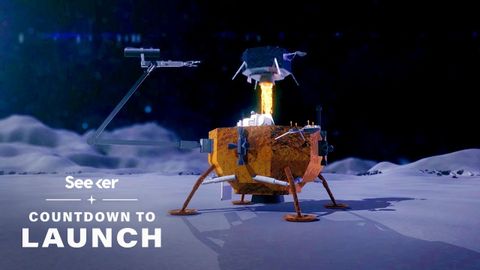中國 "嫦娥五號 "將採集近40年來的第一塊月球岩石 (China’s Chang'e 5 Will Collect the First Moon Rocks in Nearly 40 Years)
 沒有此條件下的單字
沒有此條件下的單字US /məˈtɪriəl/
・
UK /məˈtɪəriəl/
- n. (c./u.)布料;素材;資料;材料;物質
- adj.重要的;物質的
US /ˈpræktɪs/
・
UK /'præktɪs/
- n.(醫生;律師等的)業務;工作;練習;慣例
- v.t./i.(醫生;律師等)開業;實踐;練習;操練;實踐
US /ɪkˈstrim/
・
UK /ɪk'stri:m/
- adj.極端的;盡頭的;極端的;極端的
- n.最大程度的努力;極限;極端手段
